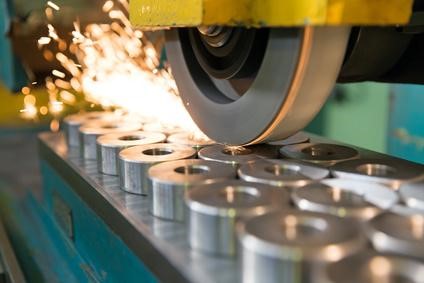For business leaders looking to modernize their supply chain, the technology investment is the easy part: Evaluate solutions, calculate the ROI, make your business case, and take delivery. Sure, it can be tricky to get sign off on these tech investments, but it’s a business problem with a logical solution.
The more challenging part is preparing your organization to take full advantage of that investment. That means getting people on board, ready for the change, and developing new processes that take full advantage of the new tech.
“High tech must be accompanied with high touch,” says Lisa Anderson, supply chain consultant and President of LMA Consulting Group, Inc. “The most successful supply chain leaders will remember that people are their number one asset.”
We asked Lisa for her perspective on the current state of supply chain, the key trends that are driving change, and how you can prepare your team for what comes next. Read on to learn what she had to say.
Modernizing Your Supply Chain Strategy
The right supply chain strategy includes technological investments, process refinements, and a change management plan for your team. It should be detailed enough to act upon, but flexible enough to account for changing trends. Here’s how to get started.
Key Trends Driving Supply Chain Modernization
For most businesses, there are two factors that make modernization essential. First, there’s sustainability: Consumers are looking to buy from sustainable companies. That means companies are under pressure to not only work with sustainable suppliers, but to prove they’re doing so.
The second factor is perhaps an even bigger driver for change: The demand for near-instantaneous, free shipping for ecommerce. “In the next five years, customers will be expecting Amazon-like service levels at affordable rates, regardless of the high levels of disruption,” Lisa says. “Reshoring, near-sourcing, and sourcing reevaluation will be major concerns.”
Lisa predicts high levels of adoption for new technologies to meet these demands. “The use of technology such as artificial intelligence, IoT, predictive analytics and other technologies will enable meeting these customer needs while maximizing profit and cash flow,” she says.
“In these early stages, it’s important to focus in on the
most relevant data to drive decision-making. ”
Getting Started with a Modernization Strategy
The actual nuts-and-bolts process of building a strategy is the same as solving any problem in your organization. “Start with the outcomes you’d like to achieve,” Lisa says, “then perform an assessment and gap analysis of your people, processes and technology. Assess your change management capabilities to achieve your outcomes. Finally, design the solution and build an implementation team.”
The process may be familiar, but knowing where to start can be a challenge. The first step should be getting a clear picture of your current supply chain. “Start simply and create a dashboard or availability screen that shows your supply chain status; however, remember that if you don’t pay attention to process disciplines, garbage in will result in garbage out,” says Lisa.
In these early stages, it’s important to focus in on the most relevant data to drive decision-making. But don’t try to boil the ocean: “Data plays a vital role; however, do not get sidetracked and overwhelmed with data. Start with your No. 1 priority, find directionally correct data and enable visibility,” Lisa says. “Once your team and supply chain partners understand this data, move to the second largest priority.”
Once you have your supply chain mapped out, you can start to implement solutions that will pay off in the short term and in the long run. A.I. and IoT initiatives have the potential for a quick win. Lisa says in her consulting work, she’s seeing “Artificial Intelligence and IoT used in predictive analytics and forecasting as top priorities. Getting ahead of customer demand drives significant supply chain value.”
Train and Hire the Right Skill Set
For Lisa, the human element is an often overlooked, but crucial, part of supply chain modernization. “I’ve found that a more dramatic ROI can occur by aligning the people, even more than the data and the process,” she says.
When bringing in new talent, Lisa recommends looking for data science fundamentals. “Data analytics, the ability to leverage ERP systems and think through down-the-line impacts as well as tying business process to systems design are all part of the equation,” she says. “But we should also look at soft skill requirements, such as the ability to collaborate.” Collaboration, big-picture strategizing, and lateral thinking are all essential characteristics of a modern supply chain expert.
The ROI Potential of Supply Chain Modernization
Remodeling your supply chain is not without risks, and it’s a process that takes time and resources to ensure success. But the rewards are worth the effort. “It depends on the situation, of course,” says Lisa, “but it isn’t uncommon to see a five or 10:1 return on investment from supply chain transformation improvements.”
As Published in: Ratelinx



